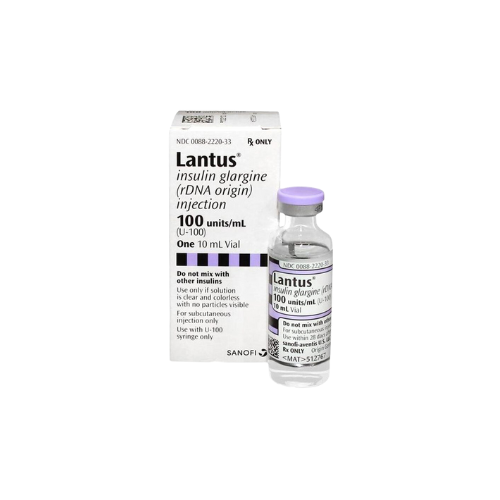Introduction
Insulin plays a crucial role in regulating blood sugar levels in the human body. It is a hormone secreted by the pancreas, which helps transport glucose from the bloodstream into cells. Without insulin, the body cannot effectively utilize glucose, leading to a condition called diabetes. In this article, we will explore the functions of insulin, the importance of maintaining balanced blood sugar levels, and how insulin deficiency can lead to diabetes. We will also discuss different types of diabetes, insulin administration methods, and lifestyle measures to support optimal insulin function.
1. What is Insulin?
Insulin is a hormone produced by the beta cells of the pancreas, an organ located behind the stomach. It acts as a key that unlocks the cells’ doors, allowing glucose to enter and be used as a source of energy. When we consume food, especially carbohydrates, our blood sugar levels rise. In response, the pancreas releases insulin to help regulate glucose metabolism.
2. The Role of Insulin in Glucose Regulation
Insulin plays a vital role in maintaining balanced blood sugar levels. When insulin binds to receptors on cell surfaces, it triggers the cellular uptake of glucose from the bloodstream. This glucose is then used for energy production, stored as glycogen in the liver and muscles, or converted into fat for future energy use. Insulin also inhibits the liver from producing excessive glucose, thus preventing blood sugar levels from rising too high.
3. Types of Diabetes
There are two main types of diabetes: type 1 and type 2.
3.1 Type 1 Diabetes
Type 1 diabetes, often diagnosed in childhood or adolescence, is an autoimmune disease where the immune system attacks and destroys the beta cells in the pancreas. As a result, the pancreas produces little to no insulin. People with type 1 diabetes require daily insulin injections or the use of an insulin pump to manage their blood sugar levels.
3.2 Type 2 Diabetes
Type 2 diabetes is more common and typically develops later in life. It occurs when the body becomes resistant to insulin or doesn’t produce enough insulin to meet the body’s needs. Lifestyle factors, such as poor diet, sedentary behavior, and obesity, contribute to the development of type 2 diabetes. Initially, it can often be managed with lifestyle modifications, such as a healthy diet and regular exercise. However, some individuals may require oral medications or insulin therapy to control their blood sugar levels.
4. Understanding Insulin Deficiency and Diabetes
Insulin deficiency occurs when the pancreas fails to produce sufficient insulin or when the body’s cells become resistant to insulin’s effects. In both cases, glucose cannot enter the cells effectively, leading to elevated blood sugar levels. Over time, chronic high blood sugar levels can damage various organs and tissues, causing complications associated with diabetes.
5. Signs and Symptoms of Diabetes
Common signs and symptoms of diabetes include:
- Frequent urination
- Excessive thirst
- Unexplained weight loss
- Fatigue
- Blurred vision
- Slow wound healing
- Recurrent infections
If you experience any of these symptoms, it is essential to consult a healthcare professional for a thorough evaluation.
6. Diagnosis and Treatment
To diagnose diabetes, healthcare providers may perform blood tests, such as fasting plasma glucose (FPG) or oral glucose tolerance test (OGTT). These tests measure blood sugar levels to determine if they are within the normal range.
The primary treatment for diabetes aims to maintain blood sugar levels within a target range. This often involves lifestyle modifications, such as adopting a healthy diet, engaging in regular physical activity, and managing stress levels. In some cases, medication or insulin therapy may be necessary to achieve optimal blood sugar control.
7. Insulin Administration Methods
Insulin can be administered using different methods, including:
- Subcutaneous Injections: Insulin is injected into the fatty tissue just beneath the skin, typically in the abdomen or thigh.
- Insulin Pumps: These small devices deliver insulin continuously through a tiny tube inserted under the skin.
- Inhaled Insulin: A newer form of insulin that can be inhaled into the lungs before meals.
The choice of insulin administration method depends on individual preferences, lifestyle factors, and healthcare provider recommendations.
8. Tips for Optimal Insulin Function
To support optimal insulin function and maintain stable blood sugar levels, consider the following tips:
- Follow a Balanced Diet: Consume a variety of nutrient-rich foods, emphasizing whole grains, lean proteins, healthy fats, and plenty of fruits and vegetables.
- Stay Active: Engage in regular physical activity, such as walking, swimming, or cycling, to enhance insulin sensitivity and glucose uptake by cells.
- Manage Stress: Practice stress-reducing techniques like meditation, deep breathing, or yoga to help maintain stable blood sugar levels.
- Get Quality Sleep: Aim for seven to eight hours of restful sleep each night, as sleep deprivation can affect insulin sensitivity.
- Stay Hydrated: Drink an adequate amount of water daily to support overall health and proper bodily functions.










